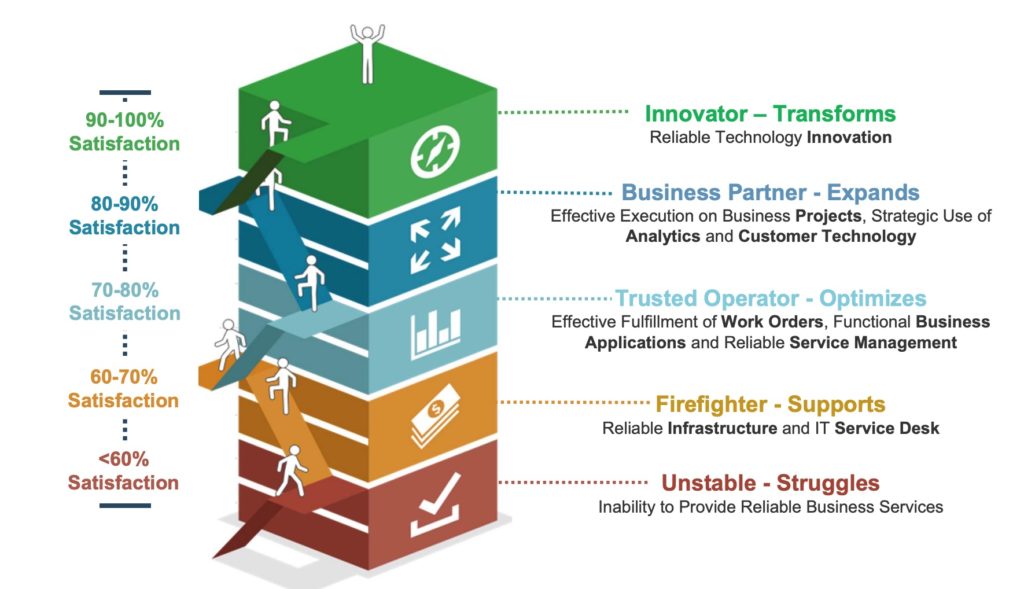It’s not possible to solve today’s challenges or achieve continuous transformation with technology alone. It’s humans, not technology, at the center of digital culture. Human resources – your digital talent and HR function – are your secret weapon to power through digital transformation.
Yet, talent capital and HR are also the biggest barriers to change initiatives and operational excellence. You need digital HR with the technological skills to make things easier and go from looking digital to living digital.
So what are the various human elements in digital transformation? How can you overcome digital talent barriers to meet and create value opportunities? This article walks through how your association can create a sharper HR strategic planning and connect IT talent to value to take on change initiatives.
#1 – Digital Talent is Scarcer than Financial Capital
Tech talent used to be easier to come by than financial support. Today, however, automation and new technologies have changed the way we work and the skills we need.
In our lopsided digital economy, human capital has become one of (if not THE) most important asset. Skilled talent is also the most difficult kind of capital to acquire. You need to have the skills and talent to deliver on strategy and meet the needs of your members. Getting the right people in place when and where it matters impacts your organizational performance just as much as your membership.
With today’s skills shortage, especially for technology talent, we’re left racking our brains with questions like: Do we have the right folks in the roles that matter most? What people and roles do we need to meet members’ needs? How do we fill key positions in two months vs. six months vs. a year to deliver on our strategy without excess headcounts and overhead costs?
Fueling the talent engine should be your number-one priority to lay the groundwork for unexpected and planned growth. You need a reliable pipeline of human capital that you can build, borrow, and redeploy talent from to meet the challenges of the future.
#2 – Power of Human Inertia
Strategic and structural changes are resistant to change. But the power of human inertia is even stronger. Especially when it comes to digital change resistance. The main culprits are human-driven.

In fact, 84% of digital transformations fail because of the inertia of people, culture, and mindsets.
The culprit in these trials and tribulations is employee resistance: people aren’t prepared to change their behavior. Humans perform well in stable circumstances, against stable challenges. But the world today is anything but stable. So, naturally, digital transformation initiatives can collide with employee pushback and cultural barriers, if you don’t lay the groundwork for digital culture change.
The focus tends to be on how humans interact with technology rather than the critical interactions between humans and humans.
#3 – Digital Culture Change
Organizations fall short because they don’t spend enough time changing workplace culture. When we’re too consumed with the structure and technicalities, we forget about the human landmines and cultural pitfalls that impede change.
You’re not going to take on digital transformation with a middle-of-the-road culture. You need a compelling philosophy – a culture that’s noticeable and distinctive. A purpose that stands for something.
A distinct culture doesn’t define the values and principles of your association. It changes how you operate, how decisions are made, and how people interact.
When culture works, it orients your people, process, and technology toward the shared belief system. This systematic direction gives you a better vantage point to understand how the different parts of your organization inform each other. You can see the dynamism of the organization as a “living organism.”
Without this systematic alignment, it’s difficult to build valuable insights and cohesive practices at an organizational level. Incremental change remains a pipe dream.
Culture is the deep perennial challenge that you need to conquer to shift from looking digital to living digital. Humans are at the center of digital culture. If you can master the human side of the digital form of culture, then it’s easy to figure out the other elements – the innovation, the collaboration, the data, and the user-centricity.
#4 – Efficient & Superior Decision-Making
For the digital paradigm shift to work, employees need to feel empowered to make their own decisions. Organizational flexibility and HR adaptability are the king and queen pillars of a rapidly modernizing workplace.
Similar to digital culture, you’ve got to figure out critical elements like cohesion, ownership, and intentional action. The not-so-secret sauce of success is to build a “high trust culture” through effective digital governance.
Moving towards a digital culture of trust and accountability removes barriers to rapid decision-making. Digital governance is a vital prerequisite to converting from a low- to high-trust organization.
Creating a well-designed framework for digital governance is like adopting common language with shared values. It establishes roles, responsibilities, change management authority, and open lines of communication for calculated decision-making and better digital accountability. Putting this framework in place gets your people, processes, and technology in the “ready position” to embrace to transition to a high-trust organization.
You can see tangible benefits behind every nook and cranny. It empowers your teams—whether in-house, remote or distributed—to deliver faster, smarter results. Indicators of a high-trust organization with strong digital governance practices include higher levels of engagement, intelligent risk-taking, innovation, productivity, team alignment, and easier onboarding. It also minimizes overhead costs, non-value-added IT activities, and wasted IT time and effort.
To digitally transform, we must redefine the traditional power dynamics, shifting from top-down to an agile workplace with open lines of communication between different departments, function areas, and individual staff members.
#5– Team Agility
There seems to be a limited focus on cross-function collaboration and continuous improvement in the association industry. Teams often operate in silos without a common digital governance framework or a clear, cohesive culture. Instead, bulky processes and a rigid team structure hinder proactivity and information flow. Inaction tends to be the default state.
High team agility is the exact opposite. Agile teams are high-performing, cross-functional teams with a strong bias for action. It’s this action bias, along with their centralized approach to planning and decentralized approach to execution, that makes agile teams so successful. New information and uncontrollable circumstances are met with incremental adjustments delivered at speed.
Through centralized planning and decentralized execution, agile teams leverage the cycle of continuous improvement to turn the changing business environment into a competitive advantage. Frequent debriefs allow them to pivot and make smarter, faster course corrections. If the adjustment fails, they know where and how to pivot to minimize costs and impact.
Agile teams are typically highly flexible, focused, elite teams. Dissolving traditional team silos in favor of adjustable, cross-functional “fusion” teams turns your organization into an analytical, data-driven powerhouse. Moving from a ready-made team design towards a malleable structure, especially for IT teams, means there’s less fluff to manage and more value to deliver.

In short: In order to increase your organization’s digital adoption and rate of change, you need to form an agile environment for your team.
#6 – Vision and Values
Talent management and retention best practices are not what they used to be. The values of employees are evolving. To keep people, you’ve gotta spend time on creating a signature employee experience.
71% of U.S. professionals claim that they’d take a pay cut to work for an organization that shares their mission and values. Most workers today, especially Gen Z and younger professionals, value a purposeful workplace culture over compensation.
Working for the good, somewhere with a strong mission-centric, purpose-driven culture, has become a point of pride. This should be a sign of what’s to come and how you can reel in and retain talented people.
Modern engineering practices and the changing nature of tech means that it’s now possible to solve pretty much any customer need or obstacle that emerges. So, strong IT talent isn’t drooling over the paycheck.
Don’t get me wrong, compensation is still a big factor. But so are the societal impacts of products and services. Success is no longer measured solely in terms of bottom-line figures. Quantifying the benefits to society can help you drive high levels of employee engagement and satisfaction.
#7 – Incentives and Rewards
Incentives have traditionally been awarded based on milestones and perceived achievements. To power digital transformation, outcomes, not activities, must be the north star of success. The result of value initiatives must be the measure of success. This means shifting incentives and rewards from:
- time-to-market –> repeated time-to-market
- project budget –> progressively increasing ROI of future projects
Too many initiatives come up short because they weren’t granted a few more dollars or iteration time to do it right. Or because we’re constrained by traditional team models instead of versatile, adaptable, and reliable alternatives. This lack of foresight causes us to lose out on a whole lot of added value, meaningful progress, and better stakeholder results in the long term.
Today, IT success means delivering benefits, generating revenue, and creating business value. Empowering value networks beyond constrained geographical boundaries or rigid, in-house, command-and-control traditional can allow your organization to rapidly respond to tech changes with speed, precision, and creativity.
#8 – Value-Creation Talent Management
Today, the top 20% of organizations across most industries control all the returns and economic power. The prizewinners may be building better member-facing/user-facing experiences. But there’s a deeper perennial challenge at play: talent allocation or deploying human capital to the highest-value opportunities.
A rapid, value-aligned approach to talent allocation (aka value-driven resource allocation) is about getting the right talent in roles that matter to execute your strategic plan in a cost-effective and scalable way. It goes beyond the problem of job selection. Beyond proactively managing staffing transitions, value-driven allocation helps you anticipate and plan for upskilling and learning opportunities as well as talent gaps and demand needs. A combination of skills-based acquisition, deployment, and management is involved in this broader “flow of work” model of human capital management.
Compared to being locked into in-house teams and the inflexibility of the traditional workplace model, many associations are looking beyond the geographical confines to solve talent shortages and increase growth potential and automation/IT competencies. By partnering with an association talent vendor like Elastik Teams, you can get an adjustable, low-risk, high-skill tech team in place to improve the business readiness of your IT operations.
These teams are remote, portable, virtual, and/or distributed but they bring the same dedication as in-house staff and are ingrained in your unique culture and committed to the mission. An adjustable IT team of top tech talent can also make your digital environment simpler, more collaborative, and more purposeful for everyone, leaving a lasting impact. It can turn technology into a powerhouse and maximize stakeholder satisfaction.

HR Solution to Overcome Digital Talent Barriers
Getting the right people in the right roles at the right time is how you compete in the lopsided winner-take-all digital economy.
Elastik Teams provides the high-composability talent solution you need to adapt quickly, innovate aggressively, and feed new value streams at scale and pace. The best part? You don’t have to worry about taking on excess overhead or employee contracts.
We hook you up with top tech talent from around the world to solve digital HR challenges. You’ll get the digital talent you need to make your IT department more disruptive, resilient, and dangerously competitive.
Ready to turn IT into a strategic business function? Let’s talk.









